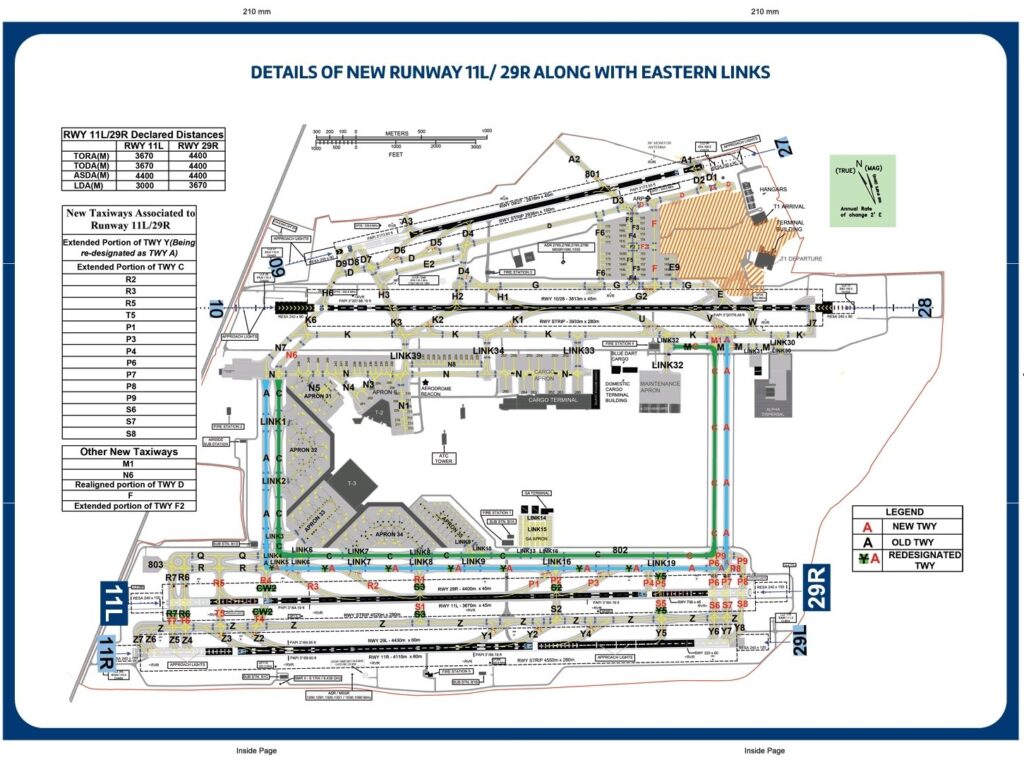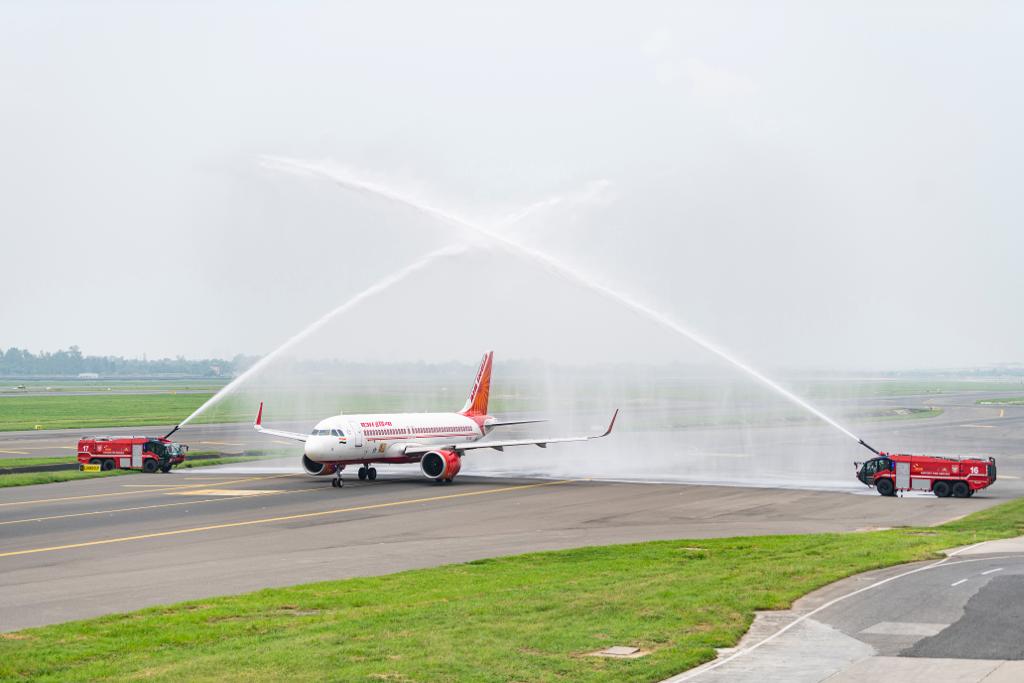Delhi Airport, the biggest airport in India by capacity right now, added yet another feather to its cap yesterday with the launch of multiple capacity-enhancing initiatives that have been needed for a long time.
The Delhi Airport is operated in two sets of airfields (North and South). When the third runway was opened in 2008, it took a long time to taxi to bring the aircraft to the gate (and vice versa during take-off). Per some accounts, the taxi time to Runway 28 from the Delhi Airport Apron 34, where Full-service carriers operate from, used to be a large part of the airborne time of a short flight such as that to Chandigarh from Delhi since the only link connecting the two parts was on the eastern side.
Delhi Airport inaugurates a new elevated cross taxiway and fourth runway.
A new elevated cross taxiway was being constructed, which you could see while driving to Terminal 3 of Delhi Airport for many months. The elevated taxiway is now another connection between the north and the south airfields and will allow for aircraft to taxi about 7 kilometres less. The avgeeks should be able to see aircraft right over them while approaching the elevated taxiway to drive under it.
The taxiway can handle large aircraft, such as the Airbus A380 and the Boeing 747s. Each lane is 44 metres wide with a gap of 47 metres between them to allow simultaneous passage of two aircraft. The opening of the new taxiway will reduce annual carbon dioxide emissions by 55,000 tonnes, given the reduction in taxi distance.
According to DIAL, the ECT is estimated to save around 350 kilograms of fuel every time an aircraft taxis through the runway from RW 29R to Terminal 1 and vice versa. DIAL further estimates it would reduce 1,114 kg of carbon dioxide emission for each aircraft taxing along the ECT. From a sustainability perspective, around 9,175 MT of fly ash has been used for the construction of the ECT.
The elevated taxiway was constructed as a part of the Phase 3A expansion of the airport as a part of the Delhi Airport masterplan. Delhi Airport also gets a fourth runway simultaneously, which is expected to raise the aircraft movement at the airport from the current 1,500 to 2,000 per day.

Delhi’s Indira Gandhi International Airport is the first in the country to have a fourth runway and a dual elevated cross taxiway.

Water salute for the first take-off from the Fourth Runway at Delhi Airport. (Picture Courtesy: MOCA)
Once the passenger terminal buildings of Delhi Terminal 1 are completed, the full set of developments is expected to increase the airport’s passenger handling capacity from 70 million to 109 million per year. Hartsfield-Jackson Atlanta International Airport in the U.S. is currently the world’s busiest airport, with 75.7 million passengers annually.
As per J. Scindia, the Indian Minister for Civil Aviation, who inaugurated the project,
This would crest and beat even Atlanta in its capability. With that capacity in place, we would be well positioned both on an infrastructure side and a capability side for creating the international civil aviation hub in India.
Bottomline
Delhi Airport now has added capacity in the form of a fourth runway, which will help add about 500 aircraft movements a day. Not just that, there is a new ECT added, which will allow aircraft to taxi between their bays and their allocated runways in the shortest possible route rather than the earlier singular (extended) routing made available to them. While LHR struggles with its third runway, DEL already has its fourth.
What do you think of the addition of new capacity to Delhi Airport?
Liked our articles and our efforts? Please pay an amount you are comfortable with; an amount you believe is the fair price for the content you have consumed. Please enter an amount in the box below and click on the button to pay; you can use Netbanking, Debit/Credit Cards, UPI, QR codes, or any Wallet to pay. Every contribution helps cover the cost of the content generated for your benefit.
(Important: to receive confirmation and details of your transaction, please enter a valid email address in the pop-up form that will appear after you click the ‘Pay Now’ button. For international transactions, use Paypal to process the transaction.)
We are not putting our articles behind any paywall where you are asked to pay before you read an article. We are asking you to pay after you have read the article if you are satisfied with the quality and our efforts.


The biggest hurdles with Delhi airport is the obscene abuse of authority despite a bad performance quality by CISF. They are the strongest bottlenecks for a smooth passenger experience. They are rude, inexperienced, badly trained, arrogant, and authoritative. The technology used in Delhi airport is just as slow.
This factor is coupled coupled with the pathetic architecture of Terminal 3 which makes the walk from check-in counters to the gates very long. Most other times, passengers tend to miss the flight. Ergonomics wise, Delhi T3 is a complete disaster.
This is why I am not impressed with Delhi airport, no matter how many laurels they claim to have got. Unless the “i am safe sarkari/govt job mentality does, the airport can never be upto a decent standard”.
Hopefully will lead to a reduction in crazy headlines i.e. “Del-Bom fares higher than international fares”. Sad situation for tens of thousands of passengers to be paying 4x fares on one leg of a journey vs the other (May-June’23 as a recent example). Will add more dynamic scheduling and flexible capacity to DEL routes.
@Praveen, the simple truth is, buying behaviour has changed post covid. Many people now buy tickets closer to the date of travel by when fares have gone up. Also, more folks want to travel. Remember, Delhi has spare capacity, not Mumbai, which is bursting at the seams. This helps IndiGo a lot, though, adding more flights to other airports (and Air India too!)